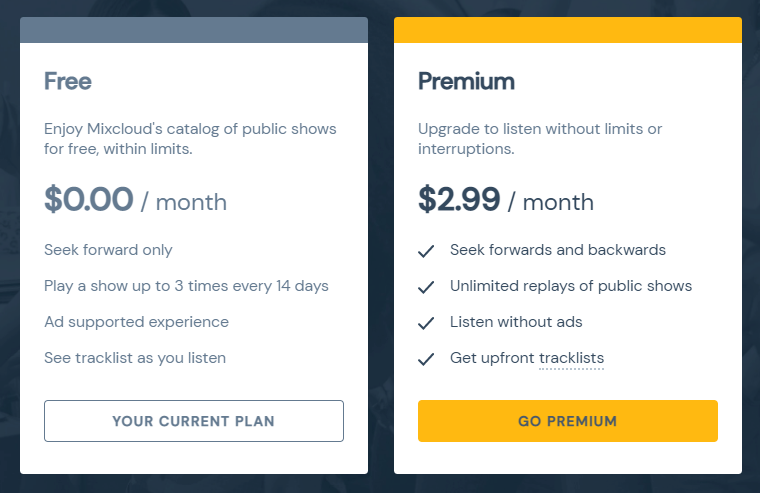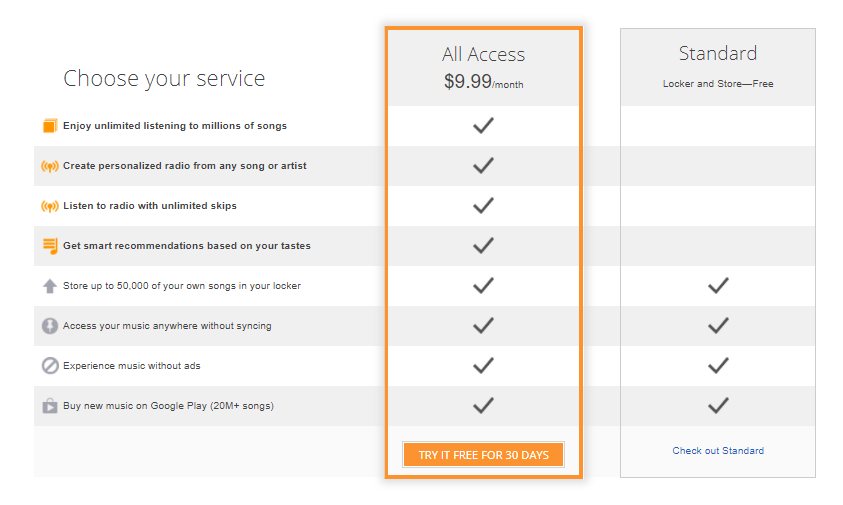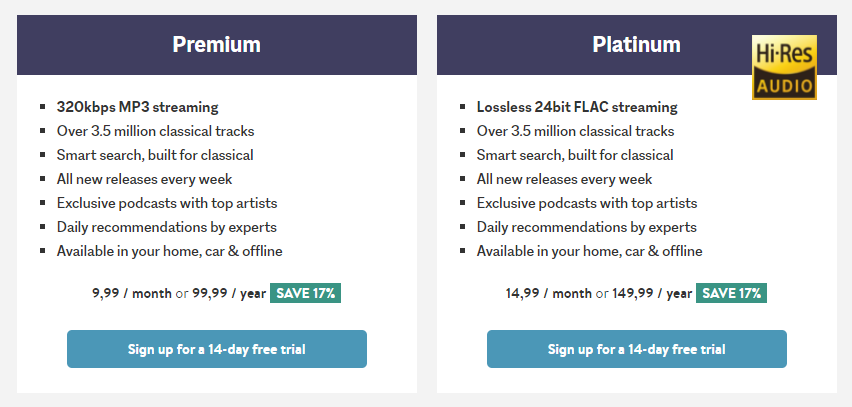
Music Streaming Apps – Features, Tech-Stack, and Everything Else
Everyone is applauding music industry giants like Spotify, Apple Music, and Pandora. These audio streaming applications have transformed the way everyone listens to music. Due to their overwhelming success, entrepreneurs are thinking to start the development of their own music app. Modern technologies are streamlining the process to deliver an effortless user experience. Here we will understand why building music streaming apps is a productive and money-making business idea.
Some Data and Numbers
In the music streaming sector, the global revenue is anticipated to reach up to US $21,315m with a CAGR of 5.4% by the end of 2025.
The overall number of active users is anticipated to be 933.2 million by the end of 2025.
Up to October 2020, Spotify contains 320 million active users from which 144 million are paid subscribers.
A number of Spotify premium subscribers worldwide from 1st quarter 2015 to 4th quarter 2020.

Music Streaming Apps are classified into two parts mainly.
|1. On-Demand Music Streaming
In this category, users listen to any song in the DSP’s (Digital Service Provider) database without any limitations on a time duration or playback facilities. Such DSPs are known as cloud servers that can be operable via remote servers that store data. Individuals can create playlists and perform actions like pause, rewind, and skip for any song, but are not allowed to copy the digital file. Users only need to have a strong internet connection to access these apps.
Well-known examples of on-demand music streaming apps are Spotify, Apple Music, Tidal, SoundCloud, and BandCamp.
|2. Radio Stations
It is either pre-recorded audio files or live (via a microphone) circulation streaming on the internet. The radio stations play trending MP3 files. There is no other option for users to play the music of their interests. They have to listen the same that can be heard worldwide.
Collaboration with SESAC and BMI is required for the brands to get the licensing rights, but charges are less for this kind of music streaming apps.
Wondering How To Make Your Music Streaming Application Rock? Check out these Steps.
- Develop leading features such as login/registration/sign up, push notifications, search, payment gateway subscription, online streaming, and music organizing-discovery-library.
- Go with the Sound Recording License Agreement or Musical Composition License Agreement. Choose whatever is best for you.
- Build up a team or hire a company that will provide comprehensive live music streaming app development services according to your requirements.
- Deliver attractive UI/UX with an intuitive look by outlining wire frames, mock-up, prototype, and choosing the right style guide in the designing phase.
- Decide and create an MVP for business viability, lesser development cost, mitigate investment risks, and develop and deploy faster.
Top music streaming apps in 2021 and their salient features
#1. Spotify – It is one of the largest music streaming service providers on a global level with more than 345m active users in a month, along with 155m paid subscribers by the end of 2020. You can find the music/podcast within the app, browse the musicians, albums, celebrities, and much more.
Features
- Enable users to sort the filter of the music according to their preferences.
- Autoplay support.
- Users can read the lyrics.
- Shuffle feature to mix up songs.
- Users can see the artist’s profile.
- Play MP3 files stored on the device.
- Users can create, edit, and share playlists and podcasts.
Accounts and subscriptions

#2. Apple Music – It is a music and video streaming service produced by Apple Inc. Users can listen to 70m songs from the iPhone ad-free and easily explore among artists or albums. The service also comprises Internet radio stations (Apple Music 1, Apple Music Hits, and Apple Music Country) that circulate live round the clock to more than 200 countries.
Features
- Provides playlists, albums, artists, and songs.
- Enable multiple shortcuts to perform activities.
- Listen with seeing lyrics.
- Allow users to customize the library screen according to their interests.
- Merge apple music with iTunes.
- Download favorite tracks.
- Users can select on-demand music to stream to their devices.
Pricing model
- US$9.99 / month for a single license
- US$99.00 / year for a single license
- US$14.99 / month for a family license
- US$4.99 / month for a student license
#3. YouTube Music– This app supports iOS, Android, and desktop and offers a customized interface for music streaming enabling users to explore remixes, singles, videos, and live performances. Users can find music according to their moods, genres, recommendations, and playlists.
Features
- Displays new albums on opening the website.
- Users can watch music videos.
- Allow users to make new playlists according to their preferences.
- Easily explore music and videos.
Subscriptions

#4. MixCloud – Supports iOS and Android devices. Users can easily browse and stream millions of DJ mixes, podcasts, and radio shows for free according to their preferences.
Features
- Enable users to upload their own stream audio.
- Provide a variety of music shows.
- Users can download completed shows.
- Offer an API in which users can search, upload, and place their content.
- Allow users to keep track of their favorite shows.
- Users can build playlists.
- Users can share podcasts and mixes on Facebook/Twitter.
Subscriptions

#5. Amazon Music– It is a service that permits users to listen to 60m songs ad-free with new releases.
Features
- Hands-free listening with Alexa.
- Songs accessibility without any timing restrictions.
- Supports on-demand music.
Pricing model
Users can join Amazon Music Unlimited as a prime member for $7.99/month or $79/year. Non-Prime customers pay $9.99/month.
#6. Google Play Music – Supports on-demand music streaming. Users can easily explore among artists, songs, albums, and more.
Features
- Shuffle feature to mix up songs.
- Enable Subscription to a podcast.
- Store 50k+ songs from the collection.
- Supports iOS, Android, Android TV, and web browsers.
- Users are enabled to download songs they like the most.
- Provide song recommendations.
Pricing model

#7. SoundCloud– It offers 190m+ songs with high-quality audio from 20m creators.
Features
- Users can record and upload sounds and share them publicly or privately among selected people.
- Users can evaluate their performance.
- Interaction with the listeners in the comments.
- Store favorite tracks and playlists for the future.
- Unlimited tracks to listen to.
- Enable users to place a video widget on any website.
- Supports iOS and Android.
Pricing model
- The basic version is free.
- SoundCloud Pro Unlimited (premium version) costs $12/month if billed yearly and $16/month if billed monthly.
- With SoundCloud Pro Unlimited, creators can access Repost by SoundCloud
- SoundCloud also offers SoundCloud Go for $4.99/month.
- The Go+ version for $9.99 a month. If users have subscribed for Pro Unlimited, they can get Go+ for half-price.
#8. PrimePhonic – A website designed and developed especially for classical music lovers.
Features
- Supports iOS and Android.
- Album suggestions.
- Users can explore by album and composers.
- Superior audio quality.
- On-demand radio.
- Discover the latest works and hidden gems.
Pricing model

#9. SiriusXM Internet Radio– This app makes personalized stations and provides more than 150 streaming music ad-free.
Features
- Browse various online channels easily.
- Provide personalized recommendations.
- Listen to music by downloading the app or listen online.
- 5k+ hours of on-demand performances, interviews, and shows.
Subscriptions
After the merger, Sirius XM started providing various new options, comprising à la carte offerings, a family-friendly version, and “mostly music” or “news, sports, and talk” packages, price ranging from US$6.99 to US$16.99/month.
#10. LiveXLive – A website accessible through mobile devices. It enables users to share customized music stations.
Features
- Provide pre-programmed traditional variety, specialty, and artist stations by expert DJs.
- Enable users to make entire stations of particular artists.
- Users can keep creating any of the stations by rating favorite tracks and banning artists/tracks.
- Enable subscribers to tailor any station as per their preferences by setting more hits/depth, more/ less of their favorites, and more current/classic material.
- Access to more than 40 live-streamed events a year.
Account types

Technology Stack
Front-end technologies
- Used programming languages to develop Android apps are Java and Kotlin.
- Used programming languages to build iOS apps are Swift and Objective-C.
- Used programming languages to create Web apps are HTML and CSS.
Back-end technologies
PHP is a renowned server-side scripting language. But as a music streaming app needs to receive millions of user requests, developers are starting to prefer Node.js due to its features like scalability, speed, security, and modularity.
Database server
Wowza Streaming Engine leveraged the most because it was reviewed as the best media server for audio/video streaming. Whether it is Adobe Flash Player or iOS QuickTime player, the Wowza media server can stream to multiple playing devices altogether.
Summing Up
As the world is adjusting to the new normal of social distancing, brands are in quest of innovative ways to entertain their audience. In this pandemic, some music streaming applications are aiding artists to run donation campaigns, while other apps are applying different entertaining strategies to provide free content.
Individuals are accessing WiFi extensively and have been inclined more to visual forms of entertainment like gaming, live streaming, social media, and video streaming. Ultimately, demand for music streaming apps is boosting, and so it is the right time to invest in app development strategies for brands to entertain their audience fully.
Source: https://gopostbox.com/music-streaming-apps-features-tech-stack-and-everything-else/
